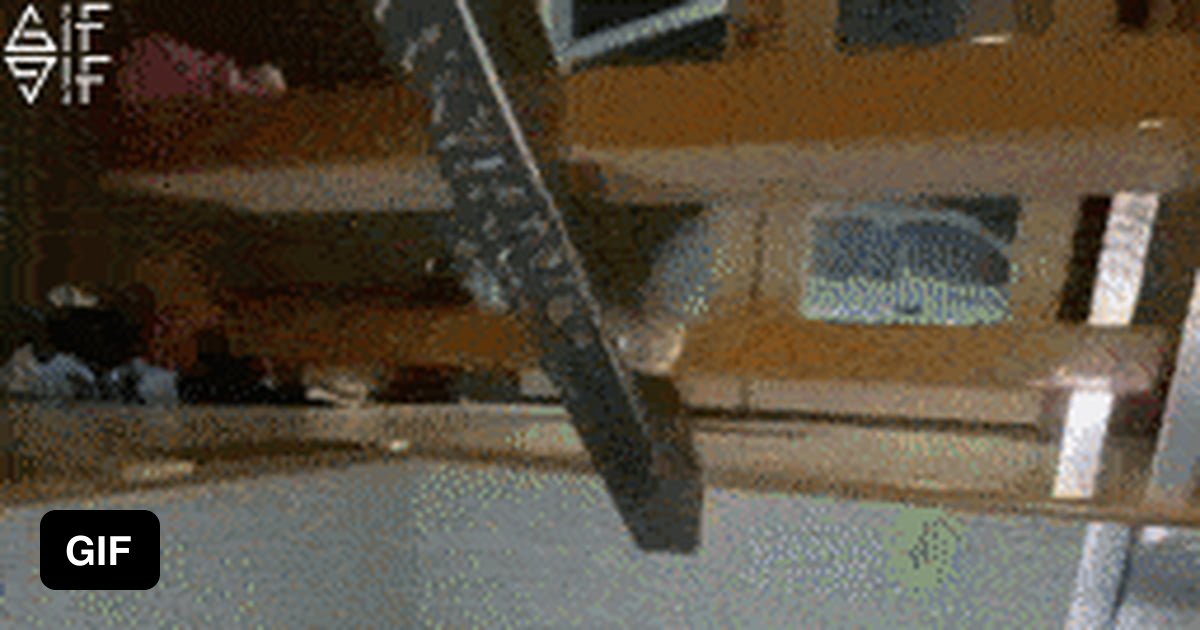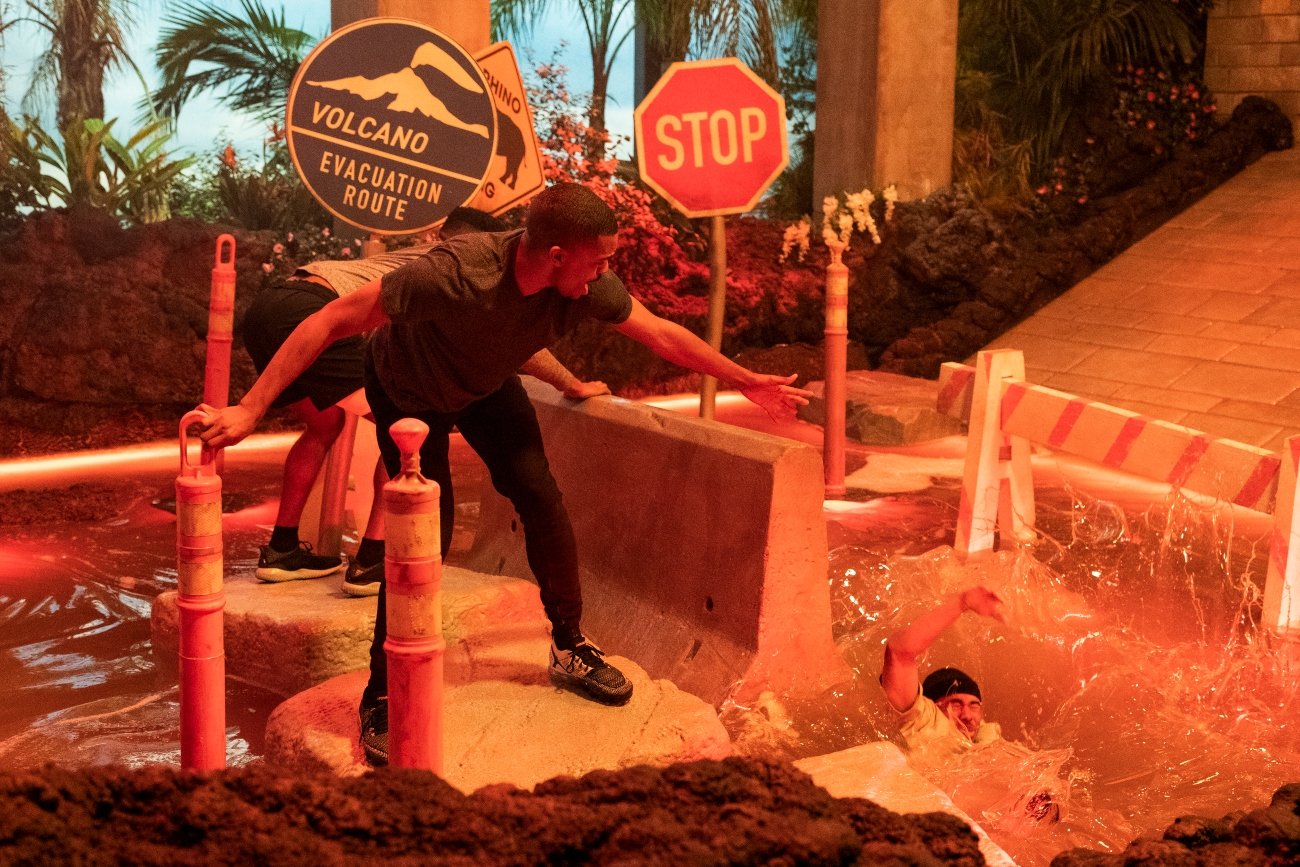Have you ever played the childhood game, “The Floor Is Lava?” It’s a simple concept: the floor is suddenly molten hot, and you must scramble to find a safe place to stand. But have you ever considered the logistical nightmares such a scenario would present? Where would the billions of people on Earth go? It’s a thought experiment that challenges our understanding of human behavior, urban design, and even the limitations of our planet.

Image: 9gag.com
This question, seemingly whimsical, taps into a deeper exploration of our relationship with the environment and our capacity for survival in the face of sudden catastrophic change. It compels us to consider the limitations of our current infrastructure, the potential for mass panic, and the unforeseen challenges that could arise from a seemingly impossible but fun game.
The Rules of the Game
Let’s first define the terms of our hypothetical catastrophe:
- The Lava Is Real: We’re not talking about a playful game where the floor is merely declared off-limits. This is a genuine volcanic eruption or some other unimaginable event where the Earth’s crust melts, turning our solid ground into liquid fire.
- Instantaneous: This isn’t a slow creep; the lava appears instantly. Think of it as the “snap” from Avengers: Infinity War, but instead of half the universe disappearing, half the planet becomes a fiery inferno.
The Problem of Survival
Now that we understand the rules, let’s get down to the nitty-gritty: where do we go? The answer, unfortunately, isn’t as simple as climbing the nearest table (although, kudos for quick thinking!). Here’s where the real-world challenges begin:
- The Scarcity of Safe Zones: In our world of densely populated cities and sprawling suburbs, safe zones are surprisingly few and far between. Even high-rise buildings aren’t immune; the heat of the lava would likely cause structural damage, rendering them unstable and dangerous.
- Mass Panic: Imagine the pandemonium. Billions of people suddenly realizing the ground is on fire, scrambling for any available space. Traffic would cease to exist, and communication networks would likely collapse, making it impossible to coordinate evacuation efforts.
- The Logistics of Survival: Even if we found safe havens, the challenges of survival become apparent. Food, water, sanitation, and medical care would be in dire straits. The world would be thrown into chaos, and the ability to recover would be a monumental task.
Our Possible Refuge: A Glimpse into the Future
So, where do we turn? Here are some potential solutions (some more realistic than others):

Image: www.cheatsheet.com
1. The Power of Height
Our first instinct might be to climb to the tallest building. While this might offer temporary respite, the heat from the lava could cause even the sturdiest structures to crumble.
2. The World of Mountains
Mountains, with their sheer altitude, seem like a logical choice. However, even these towering peaks wouldn’t be immune, as the heat from the lava would likely create massive wildfires and potentially alter the landscape.
3. The Oceans’ Embrace
The ocean, with its vast expanse, seems like a natural sanctuary. However, the heat from the lava could cause massive tsunamis, making coastal areas incredibly dangerous. Not to mention the immediate threat of boiling water and volcanic ash polluting the water supply.
4. The Underground: A Refuge or a Tomb?
Nuclear bunkers and underground shelters might seem like the perfect solution. However, the heat from the lava could seep into these underground hideouts, making them uninhabitable.
5. Beyond Our Planet?
This is where the “Floor is Lava” scenario truly gets outlandish. If we had the technology and resources, escaping to another planet might be our only hope. However, this would require a massive investment in space exploration and colonization.
The Lesson Beyond the Game
While “The Floor is Lava” might seem like a childish game, it highlights the importance of thinking outside the box and examining our vulnerabilities. It forces us to confront the realities of our planet’s fragility and the challenges we would face in a true catastrophic event. It also underscores the critical need for disaster preparedness, innovative solutions, and a focus on sustainability.
In a world grappling with climate change and other environmental challenges, understanding the potential consequences of a catastrophic event is more crucial than ever. It’s a reminder that our planet is not invincible and that our future depends on our ability to learn from the past, adapt to changing conditions, and create a more resilient future for generations to come.
Where Do The People Go In The Floor Is Lava
Beyond the Floor is Lava: A Call to Action
“The Floor is Lava” might be a whimsical game, but the lessons it teaches are far from trivial. Consider these questions as you go about your day:
- What would you do? Take a moment to imagine the scenario and think about how you would react. Where would you go? How would you prepare?
- What can you do to make a difference? Our world faces many challenges, from climate change to social injustice. What actions can you take to make your community more resilient and prepared?
- How can we learn from this game? The Floor is Lava isn’t just a game; it’s a metaphor for the unexpected challenges we face. Let’s use this reminder to be more proactive, more informed, and more prepared for whatever the future holds.
As we ponder the challenges of a world where the floor is lava, we are also reminded that our planet and our future are intertwined. Every action we take, every decision we make, has an impact. Let’s use the lessons of “The Floor is Lava” to build a world that is not only resilient but also sustainable and just.





